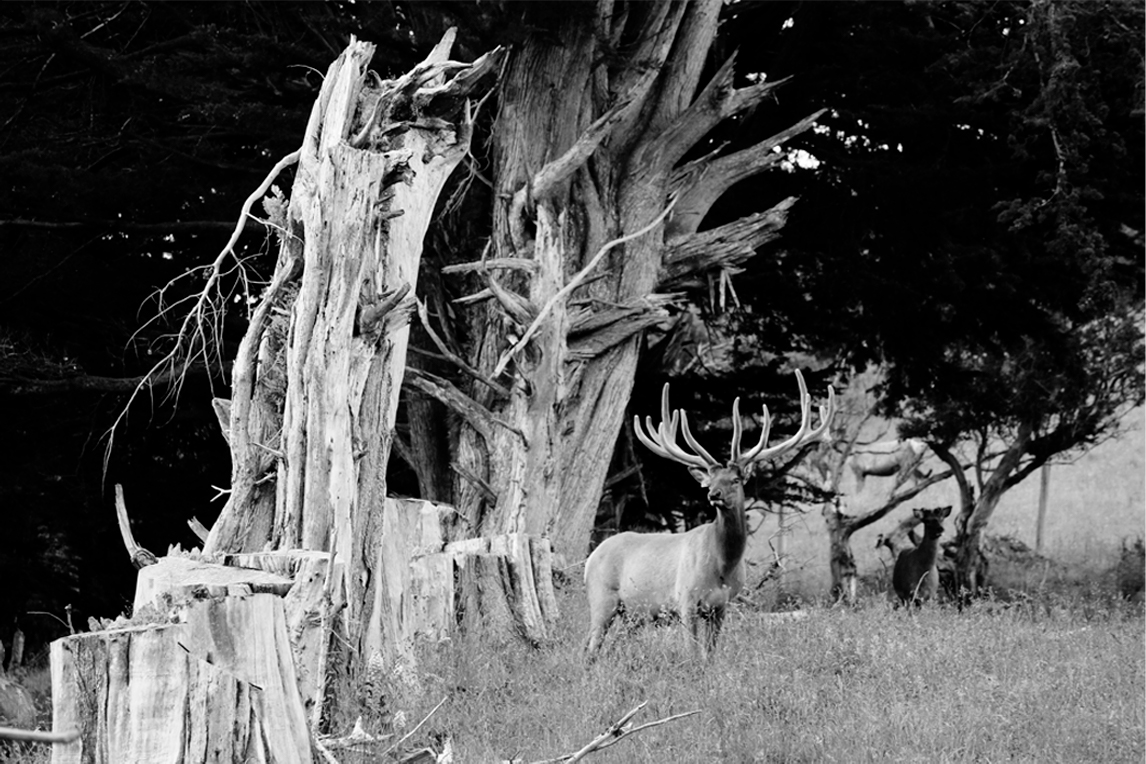Aug 15, 2025
When the NZDFA Executive Committee were planning Next Generation for 2025, it was assumed that Marlborough would be a pretty good guess for one of the South Island's driest provinces. A late July atmospheric river had other ideas. Yet while the ground underfoot may have been a bit greasy, the days for the event, held July 31-Aug 1, were sunny and the attendees were in good spirits.
Day 1 began at Wye Hills, owned by Jason Rentoul, with a presentation by Grace Boardman on the new DAGI (Drench and Grazing Integration) app, to be launched in spring 2025. While the app is currently targeted at sheep farmers, Grace said that deer were definitely being considered for the second phase and that DAGI would be keen to engage with deer farmers once the sheep launch had gone into market.
This was followed by an engaging discussion led by BNZ’s Matt Hood, where he positioned those looking to get into farm ownership as “solution providers” to those who might be looking to ease off or head into retirement. From the use of equity partnerships and other avenues to the intangible assets that include the know-how of modern farming practices and the ability to learn new technologies quickly, Matt helped the audience see clearly what they brought to the table.
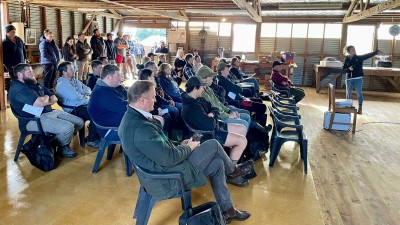

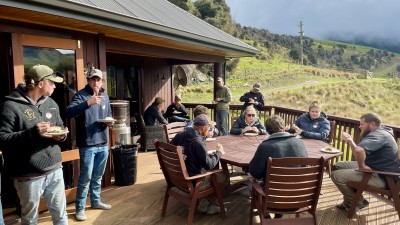
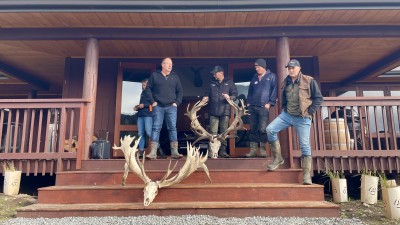
A leisurely morning tea with chats over cheese rolls and scones, provided by Justin Stevens and family, meant we were behind time getting out onto the farm, but recent rains meant more time was spent in Jason’s deer shed anyway, where remarks on recent work to the interior were common, and one attendee was said to remark, “First time I’ve heard a deer shed called beautiful before.”
From Wye Hills, it was on to Upper Avon Farms, owned by Darren Clifford. Bought ten years ago off some French winemakers who had used it as a weekend escape, the operation is primarily a trophy hunting business but also has a deer farming element to it. This added a bit of novelty to the event, as trophy parks have not traditionally been a part of any NZDFA programme, but with its dual-function nature, it was a popular stop. Though this may have also had something to do with the lunch spread put on by Chef Mark at the Avon Valley Lodge.
After lunch, Darren gave a bit more of a rundown off the business, discussing the newly introduced hunting block, aimed at those who want a more challenging hunt, as well as his partnership with Picton deer farmer Andrew Fishburn, who supplies 2-year-old stags to Avon Valley, which are then velvetted for two years before going out to the hunting block.
Darren covered everything from the main clientele (high net-worth North Americans) to what they want to hunt in New Zealand (red deer primarily, though fallow is gaining popularity) to the challenges and benefits of running a dual-focus operation. Darren said he believes that they are a perfect window into all that is grand about New Zealand – wide open spaces, stunning vistas, and delicious food at the end of a long day, all made from fresh, high-quality ingredients.
The day wrapped up back in Blenheim with a highly social dinner where attendees were able to relax and mingle with members of NZDFA, both Executive Committee and local Marlborough branch, as well as members of DINZ and host farmers and speakers from the day.
The next day started on a frosty morning on the outskirts of Seddon, where Executive Committee member Justin Stevens ran the group through some of the pitfalls of farming so close to town, with wandering tourists and “lost” kids on scooters just to name a few.
Justin led the group to a handful of sections of his farm, moving from overlooking a small basin, where discussion featured waterways and sediment traps, to a plot of vines and how he grazes fawns through them to promote vine health, to a drone demonstration by Jason Rentoul outside Justin’s deer shed, easily moving a mob of deer that had never seen a drone before.
From Justin’s recycling sprayer used on the vines to the Gallagher TWR-5 Weigh Scale and Reader on display during morning tea to the use of drones for several farm activities, technology certainly featured as one of those common off-the-ball conversation themes throughout the two days. These are where some of the best nuggets of conversation happen, in the utes between stops or standing around chewing the fat, where those who were previously strangers shared tips based on honest experience.
The last stop of the day was Ben Morven Farm, Marlborough DFA Branch Chair Geoff Hayes’ farm just outside of Blenheim. As a bit of a running theme, the previous night’s rain meant the field demonstration by Marlborough District Council freshwater scientist India Hamill could not be done in any of the farm’s waterways and so shifted inside the woolshed for a more theory-based presentation.
India’s presentation highlighted the many ways a waterway’s ecosystem can break down, as well as the key takeaway that is: “If all you have in your waterway are worms and snails, the water quality is poor; if you have any macroinvertebrates at all – such as mayflies, stoneflies, caddisflies and crayfish/koura – then the water quality is generally pretty good.
Geoff led a Q&A session covering a number of aspects of the farm, from riparian and native planting done in recent years, to tick management, to how he grazes deer among the vines after harvest. Finally, we took a drive up to look at Geoff’s paddock of Raphno, where both Geoff and Jason Rentoul spoke of their experiences with the fodder crop. (Keep an eye out for upcoming Raphno coverage after the RAP’s recent trip to Invermay.)

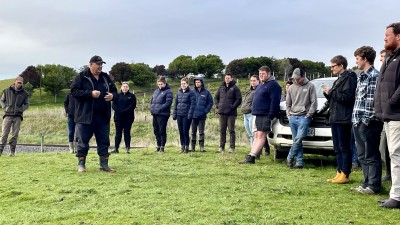
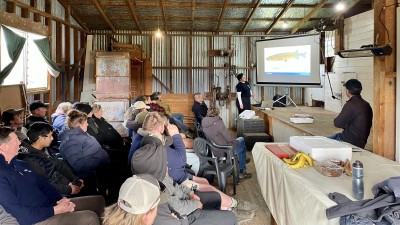

A big thanks to the Marlborough branch of the NZDFA and our host farmers for their hospitality and for opening their farms to us, to all of our sponsors for their support, and to all the attendees for taking the time to make the event what it is
To see the NZDFA Next Generation programme for 2025, complete with farm details and stock numbers, click here >>

